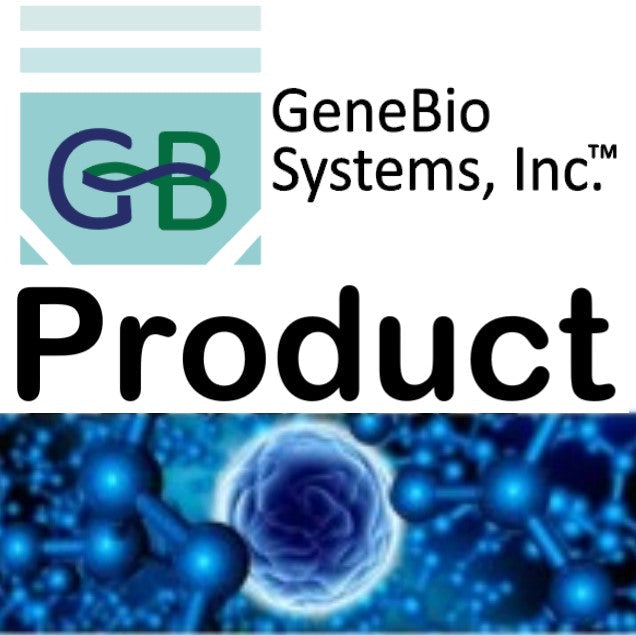Gene Bio Systems
Recombinant Human Serine-threonine-protein kinase PAK 7(PAK7),partial
Recombinant Human Serine-threonine-protein kinase PAK 7(PAK7),partial
SKU:CSB-BP885798HU
Couldn't load pickup availability
Size: 20ug. Other sizes are also available. Please Inquire.
In Stock: No
Lead time: 25-35 working days
Research Topic: Cancer
Uniprot ID: Q8TB93
Gene Names: PAK7
Organism: Homo sapiens (Human)
AA Sequence: MFGKKKKKIEISGPSNFEHRVHTGFDAQEQKFTGLPQQWHSLLADTANRPKPMVDPSCITPIQLAPMKTIVRGNKPCKETSINGLLEDFDNISVTRSNSLRKESPPTPDQGASSHGPGHAEENGFITFSQYSSESDTTADYTTEKYREKSLYGDDLDPYYRGSHAAKQNGHVMKMKHGEAYYSEVKPLKSDFARFSADYHSHLDSLSKPSEYSDLKWEYQRASSSSPLDYSFQFTPSRTAGTSGCSKESLAYSESEWGPSLDDYDRRPKSSYLNQTSPQPTMRQRSRSGSGLQ
Expression Region: 1-293aa
Sequence Info: Partial
Source: Baculovirus
Tag Info: N-terminal 6xHis-tagged
MW: 34.9 kDa
Alternative Name(s): p21-activated kinase 5 Short name: PAK-5 p21-activated kinase 7 Short name: PAK-7
Relevance: Serine/threonine protein kinase that plays a role in a variety of different signaling pathways including cytoskeleton regulation, cell migration, proliferation or cell survival. Activation by various effectors including growth factor receptors or active CDC42 and RAC1 results in a conformational change and a subsequent autophosphorylation on several serine and/or threonine residues. Phosphorylates the proto-oncogene RAF1 and stimulates its kinase activity. Promotes cell survival by phosphorylating the BCL2 antagonist of cell death BAD. Phosphorylates CTNND1, probably to regulate cytoskeletal organization and cell morphology. Keeps microtubules stable through MARK2 inhibition and destabilizes the F-actin network leading to the disappearance of stress fibers and focal adhesions.
Reference: "p21-Activated kinase 5 (Pak5) localizes to mitochondria and inhibits apoptosis by phosphorylating BAD."Cotteret S., Jaffer Z.M., Beeser A., Chernoff J.Mol. Cell. Biol. 23:5526-5539(2003)
Purity: Greater than 90% as determined by SDS-PAGE.
Storage Buffer: Tris-based buffer,50% glycerol
Storage: The shelf life is related to many factors, storage state, buffer ingredients, storage temperature and the stability of the protein itself. Generally, the shelf life of liquid form is 6 months at -20℃/-80℃. The shelf life of lyophilized form is 12 months at -20℃/-80℃.
Notes: Repeated freezing and thawing is not recommended. Store working aliquots at 4℃ for up to one week.


